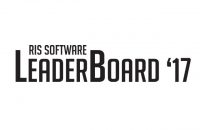Follow these 7 Tips for Increasing Warehouse Efficiency Using ERP Software
Efficiency in warehouse and inventory management operations can make or break your retail business. However, research suggests that most retailers do not get the best of it. According to data, US-based retailers sit on approximately $1.43 in inventory for each $1 of sales. This overstocking translates into issues like capital blockages, increased costs for managing and keeping additional inventory, and the risk of shrinkage due to product expiry. In addition, it is common for retailers to struggle with poor customer satisfaction due to inefficient workflows. For instance, around 34% of retail businesses report shipping an order late due to selling out-of-stock products.
How do you ensure these are common in your warehouse? For starters, if you’re already using Enterprise Resource Planning (ERP) software for your warehouse management, it’s time to leverage its capabilities optimally. Once you successfully integrate your business into a consolidated system with your ERP’s support, you can enhance your warehouses’ productivity, reduce errors, and boost your bottom line. In this blog, we’ll share seven practical tips for optimizing your warehouse operations using retail ERP software.
Here are seven tips to improve your warehouse management using ERP
- Automate inventory management
Introducing automation is an excellent way to boost your warehouse management accuracy. Data suggests that 67.4% of inventory managers still use tools like Microsoft Excel for inventory management. You need to make sure this is not the case with your organization.
Leverage features in your ERP software to introduce a more advanced approach and automate time-consuming processes like inventory tracking and reordering. For instance, you can implement workflows where the software automatically generates purchase orders when inventory levels fall below a predefined threshold. This auto-replenishment can help ensure you always maintain the right amount of stock. With that, you will reduce your risk of overstocking or stockouts and free up your staff’s time to focus on more value-added tasks.
- Streamline your warehouse layout
For efficiency, it’s crucial to ensure your warehouse layouts best utilize your available space. Using your retail management software’s data analytics features can help you quickly dive deep into your inventory data and analyze picking patterns. This way, you can explore the most efficient routes and layouts and, with visibility, introduce measures like grouping high-turnover items and placing them near packing and shipping areas. Doing so will help you enhance goods’ accessibility and minimize travel time. A word of caution: Make sure you periodically review this and adjust it based on dynamic changes in demand patterns.
- Improve order fulfillment workflows
The pace and accuracy with which you fulfill customer orders reflect your productivity and directly correlate with customer satisfaction. You can leverage your warehouse management software to boost these aspects by streamlining your order processing by integrating order management, picking, packing, and shipping into a single system.
For example, you can use the barcode scanning feature integrated into your ERP software to minimize errors in order fulfillment. This can help you reduce manual errors, expedite the fulfillment process, and ensure accurate order delivery with optimum customer satisfaction. Research suggests that using barcode technology can reduce 43.5% of human error—a clear signal to start using it!
- Optimize cross-docking opportunities
As a warehouse owner, you’ll agree that cross-docking or directly transferring incoming shipments to outgoing trucks bestows benefits like minimal handling requirements, decreased storage time, and increased throughput. According to research, addressing overstocking and understocking can help you achieve a significant 10% reduction in inventory costs. You can use your ERP’s capabilities to streamline this with enhanced cross-docking coordination and real-time transfer management features. Doing so will help you reduce the need for warehouse storage and simplify the flow of goods with timely and accurate processing.
- Use data intelligence to guide decisions
Surprisingly, up to 30% of companies do not analyze the cause and source of their supply chain disruptions. If that’s the case with your business, your ERP system’s business intelligence features can help you get valuable data insights into your operations. You can use it to spot trends and forecast demand to guide decision-making and optimize operations. For instance, you can analyze performance data on inventory turnover, order processing times, and supplier performance. Any bottlenecks you spot can guide you on where to focus for improvement.
- Work on improving supplier and customer relationships
Maintaining solid relationships with suppliers and customers is crucial when managing a warehouse. According to data, 74% of businesses experience shipment delays and much longer lead times. Using your ERP software’s features can enhance communication and collaboration with both parties and reduce such occurrences. For suppliers, the supplier management tools can help you better track orders, manage contracts, and monitor their performance. For customers, you can enhance their experience by providing real-time customer order delivery estimates with a real-time order tracking facility.
- Utilize mobile technology
If your ERP is integrated with mobile technology, make sure you start encouraging your warehouse staff to use it to access important information on the go. That’s what 73% of businesses plan to enhance warehouse management. If you encourage your workers to use handheld devices and mobile apps for real-time data entry, inventory scanning, and order processing, they’ll be able to work from anywhere in the warehouse. This will help you increase service accuracy and speed, enhancing overall warehouse efficiency.
Conclusion
Optimizing your warehouse’s efficiency using ERP software involves a combination of automation, strategic planning, and continuous improvement. Implementing these tips will help you transform your warehouse operations, enhance customer service, and even grow your bottom line.
Magstar’s warehouse management solution is tailor-made for retailers. It offers all these features and much more. If you want to streamline your retail business and warehouse for success, connect with us for a demo now.
Prefer to deepen your understanding of ERP and its potential for your retail operations? Check out our blog for the latest industry insights.
RECENT POSTS
 How to Bring Experiential Retail to Your Retail ChainEfficiency in warehouse and inventory management operations can make [...]
How to Bring Experiential Retail to Your Retail ChainEfficiency in warehouse and inventory management operations can make [...] Magstar Ranked #1 in 5 Top-20 Software Vendor Categories by 2017 RIS News LeaderBoardMagstar Inc has been recognized as a top-20 software [...]
Magstar Ranked #1 in 5 Top-20 Software Vendor Categories by 2017 RIS News LeaderBoardMagstar Inc has been recognized as a top-20 software [...] How to Manage Mobile Retail Stores and Reduce Human Error with ERPMister Safety Shoes shares their advice on how to [...]
How to Manage Mobile Retail Stores and Reduce Human Error with ERPMister Safety Shoes shares their advice on how to [...]